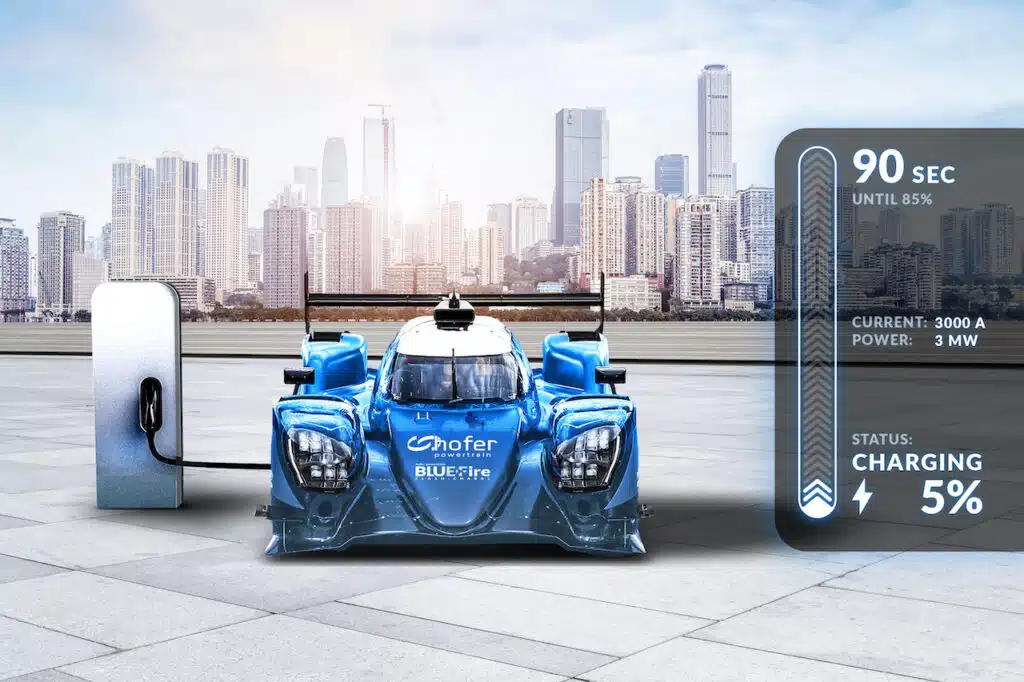Extreme e-car charging: from 5 to 85 percent in 90 seconds
It sounds almost unbelievable: with 3750 kW charging power on an electric sports car, recharging an almost empty battery to 85 percent in less than 90 seconds. The engineers at Hofer Powertrain claim to have achieved this in a "groundbreaking new development in the megawatt class with FlashCharge charging speed for sprint and endurance e-motorsport", according to reports.
Initially, the company's battery team developed a fully functional high-voltage battery using the then-market-leading BMS system and a fast-charging DC wall box, according to the release. "In what is known as the first proof-of-concept (POC), this was installed in a racing kart and subjected to a series of complex tests under load and with real driving resistance, which significantly exceeded all expectations," the statement said. According to Hofer Powertrain, the battery called BlueFire showed extremely high cycling stability, which directly led to longer battery life.
"By simulating various driving situations with the high-voltage charging station, it was possible to determine the battery and system functionalities as well as the overall performance of the system - in the process, the measurements confirmed the groundbreaking charging curve," the technology company writes. It said the battery could be charged from 5 to 85 per cent S0C (State of Charge) in less than 90 seconds. "The LTO cells used are particularly suitable for those application areas that require fast charging and discharging with high charging currents," it explains.
This development is ideal for e-motorsport, especially for 24-hour races, where recharging takes hardly any longer than the driver change that is necessary anyway. Initial talks with interested parties and investors are underway and the feedback is positive. According to the report, the engineers are currently working on increasing the already very high energy density in the cells of the BlueFire battery many times over and at the same time reducing the weight of the cells.
"In endurance racing series, the charging times within a pit stop are to be shortened so that the sports cars do not stay in the pits longer than today's internal combustion engines. The necessary charging energy is fed into the BlueFire battery via the megawatt charging system and via corresponding MCS plug systems. With this overall system, purely electric endurance races such as an LMDe race series can be made possible. With correspondingly short pit stops, an electric endurance racing series can also offer spectacular and emotional racing experiences for fans, comparable to the new LMDh racing series," Gerold Sluka, a senior battery expert at Hofer Powertrain, is quoted as saying in the press release.
